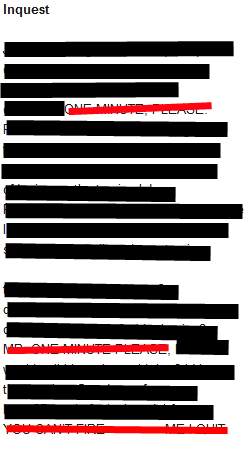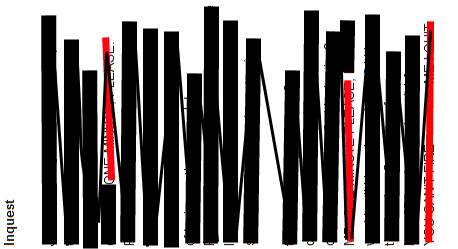Title of Work and its Form: “Inquest,” poem
Author: Natalie Shapero
Date of Work: 2011
Where the Work Can Be Found: The poem was first published by The Awl, a very cool publication that you should explore in full. You can find “Inquest” right here.
Bonuses: Here is Ms. Shapero’s page on the Poetry Foundation site. (You will find two of her poems there.) Here is a poem Ms. Shapero placed in Verse Daily. Here is a cool interview she did with Rob Stephens for HTML Giant. The interview was done in the interest of No Object, Ms. Shapero’s new collection from Saturnalia Books. If you needed additional motivation to buy the book, well, Ms. Shapero got a blurb from another of my favorite poets, Denise Duhamel.
Element of Craft We’re Stealing: Gymnastic Wordplay
Discussion:
This first-person poem features a narrator who speaks in stream of consciousness. Ms. Shapero has chosen to make the narrative of the poem a little abstract, so your interpretation may vary from mine. (And that’s okay!) I get the image of someone who has gone to work a little hungover or still drunk from the night before. He or she has locked themselves in the bathroom (or maybe a closet, depending on how drunk they are). The effects of the “gin-blue downpour” have a discernible climax, seen in the final line of the line of the poem. The narrator quits, heading off for (hopefully) greener shores.
What do we notice first about the poem? The beautiful use of language. Ms. Shapero’s lines are extremely fun and musical. Look at the way she uses vowel sounds in the first few lines:
Just in from a gin-blue downpour, pound
on the door like a cop knock, not
with the knuckles
See how many times she uses the same vowel sounds? (in/gin, down/pound, cop/knock/not) You’ll also notice that she often alternates the long and short sounds of the same vowel. (down/pour/pound) The narrative may be a little abstract, but Ms. Shapero makes sure to give us something very concrete on which to hang our attention. What is the emotional effect of the use of the vowel sounds in the poem? I am reminded of the floor routines done by gymnasts. With great grace, someone like Shannon Miller would unspool all kinds of flips and whatever-you-call-thems in one direction. Next, to demonstrate the control she had over her body, she would turn those movements in a different direction. Here’s an example of one of Ms. Miller’s floor routines. I am not ashamed to admit that I had a crush on her in 1996.
As you read the poem aloud—something you should always do with poetry—you’ll notice that your tongue is doing some gymnastics of its own. Understanding the narrative of the poem might take a little bit of effort, but Ms. Shapero gives us something else that is very easy to understand and enjoy.
Ms. Shapero injects the poem with suspense. First, there’s the knocking on a door; when you hear that happen in your home, aren’t you compelled to answer it and find out who is there? (Perhaps there’s even the small hint of danger when you hear someone pounding on your door.) A simple glance at the poem also adds tension because Ms. Shapero has put several words in ALL CAPS.
Look what I’ve done. I’ve covered all of the “standard” lines in black and the ALL-CAPS lines in red.  The ALL CAPS creeps up on your a little bit, doesn’t it? Ms. Shapero establishes that she will use the technique and then hits you with it at the end. Here’s another way of thinking of the structure:
The ALL CAPS creeps up on your a little bit, doesn’t it? Ms. Shapero establishes that she will use the technique and then hits you with it at the end. Here’s another way of thinking of the structure:
 Okay, so I’m not a master with MS Paint; that much is clear. But doesn’t the poem resemble an intimidating seismograph when it looks like this? The disturbance is getting closer, isn’t it? Perhaps we don’t always think about this consciously when we flip to a new poem in a journal, but it probably has some effect on you on a subconscious level.
Okay, so I’m not a master with MS Paint; that much is clear. But doesn’t the poem resemble an intimidating seismograph when it looks like this? The disturbance is getting closer, isn’t it? Perhaps we don’t always think about this consciously when we flip to a new poem in a journal, but it probably has some effect on you on a subconscious level.
What Should We Steal?
- Balance concrete elements with abstract ones. If you’re going to be a little experimental with your plot, make sure other facets of your work are easily accessible in some way.
- Allow the structure of your work to add suspense all on its own. The way your work looks can add suspense as much as the words you’re using.
